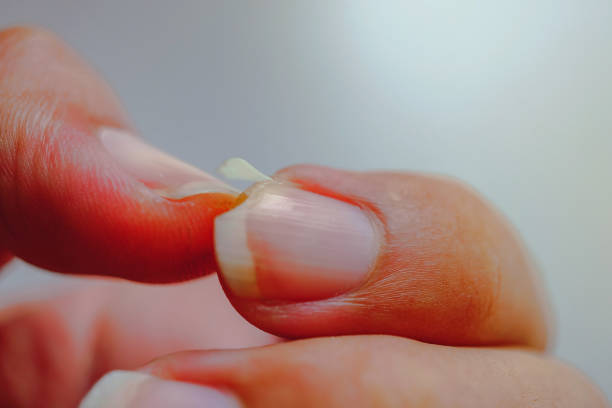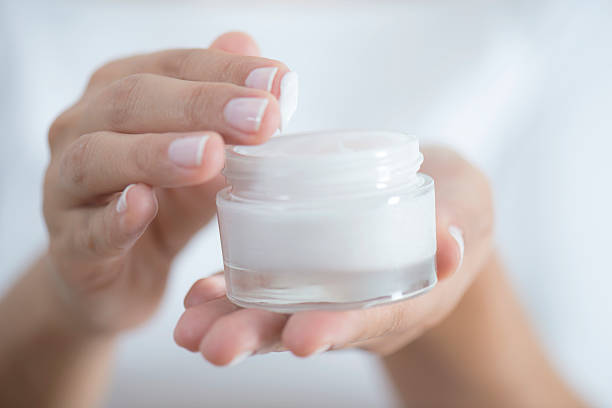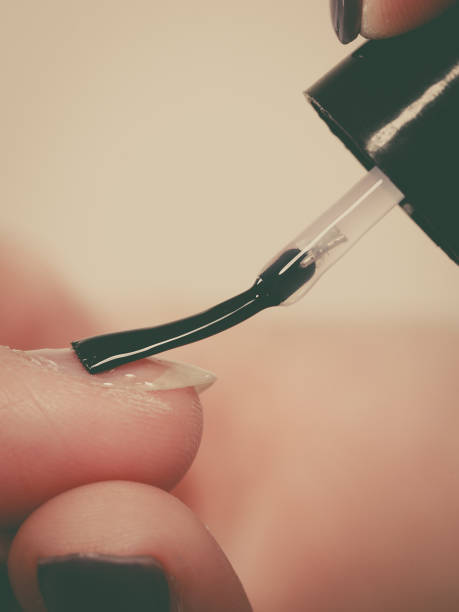Does Cold Weather Affect Nails?
The short and sweet answer is yes. Cold weather is extremely drying and exacerbates nail problems such as peeling fingernails, brittle flaky nails, nail skin peeling and also contributes to nail paint chipping.
When the temperature starts to drop, the effects of the cold weather can be felt in many areas of our lives. One of the most common and annoying of these effects is the impact it has on our fingernails. From peeling, splitting and chipping to discoloration and damage, cold weather can wreak havoc on our nails. Let's see why so we can best fight the causes!
In this article, we’ll explore the effects of cold weather on our nails, in particular, the issue of nails peeling and what causes nails to peel, dry cuticles and nail skin peeling, nail growth and health as well as what to do when nail polish chips easily. We need to understand the causes in order to prevent the problems, and what to do when your nails are already affected by cold temperatures. Knowledge is so powerful!
Cold Weather, Nail Growth & Nail Health
We now know the cold weather of winter can have a surprisingly detrimental affect on fingernails. When temperatures plummet, the air contains less humidity which cause the growth rate of nails to slow, become brittle and flaky and are more prone to peeling, thinning and breaking. And since nails are made mostly of keratin, a type of protein, exposure to cold temperatures can cause the nails to become dehydrated, leading to further breakage.

The cold weather also impairs the ability of the nails to absorb moisture, which can exacerbate the problem making them more vulnerable to nail layers peeling, splitting and chipping.This is especially true for people who use their hands a lot, requiring constant washing as do medical professionals, or tasks that involve touching porous materials that can pull moisture from the hands and fingers such as paper bags, paper boxes and cloth textiles. Dry chafed cracked hands and fingers are an open highway for harmful bacteria into your body, so lotion-up and protect yourself! Tip: Soaking sore raw hangnails and cuticles in very warm to nearly hot clean water several times a day helps speed up healing.
Cold weather can also have a detrimental affect on the appearance of nails. Nails that are exposed to the cold are more likely to become discolored and dull. The nail beds become dry and the edges become brittle and flaky. To counter this, it is important to wear gloves and to keep hands and nails well-moisturized. It is extremely helpful to keep a good moisturizing lotion or a simple jar of pure petroleum jelly at your kitchen and bathroom sinks to use religiously after each hand-washing. Tip: To further prevent nail layers peeling and thinning, never pick at or peel artificial nails or nail polish from your nails. Always remove gently with brand recommended solvents.

Cold weather can also cause nails to become more prone to fungal infections especially toenails as they are wrapped up nice and cozy in thick socks and boots during winter with little time to breathe and air out. Fungal infections can cause the toenail peeling in layers, become discolored, thick and brittle. To prevent this, it is important to keep hands and feet clean and dry and to avoid sharing towels and other items with people who may have a fungal infection. Tip: Airing out shoes by alternating different shoes daily giving them time to dry out between wear will help prevent excessive moisture that can lead to fungal infections.
Causes Of Nail Paint Chipping in Cold Weather
As with many of the effects cold weather has on our bodies, nail paint chipping can become more prevalent during the cold weather winter months. Due to a decrease in temperature combined with dry climate the cold air can draw out the moisture from our nails, causing them to constantly shrink and expand which has a direct affect on the nail polish adhesion. To test this theory yourself, try painting any flexible object, wait for it to completely dry and then flex it back and forth. Notice the cracks and chipping the more times it flexes, shrinks and expands. In addition, during application as the temperature drops, the nail polish will become thicker and more difficult to apply. This can cause the polish to chip and flake off more easily than it would at a higher temperature. Keeping the nail polish at moderate room temperature during application will help resolve application issues and help with adhesion.
How to Prevent Nail Paint Chipping in Cold Weather
The most effective way to prevent nail polish chipping in cold weather is to properly prepare your nails before applying the polish. Start by soaking your nails in warm water for about five minutes. This will help to soften the eponychium and make it more pliable. After soaking your nails, use a cuticle stick to gently push back the cuticles and trim any excess skin. This will help ensure that the nail polish has a smooth surface to adhere to. Next, use a fine nail buffer to gently buff and clean away any minor ridges, imperfections and built-up oils and debris from the surface of your nails. Taking these steps will prime the nail plate and help the nail polish to adhere more easily; just like you would do when priming, preparing and painting any other surface!
Finally, apply a thin layer of high quality strengthening and bonding base coat as a nail hardener to your nails before applying the nail polish. This will help to protect the nails and make them less prone to chipping. When applying the nail polish, be sure to use thin layers, even when using high opacity or highly pigmented nail colors, and allow each layer to dry thoroughly before applying the next. This will help to ensure that the polish will be less likely to chip or flake off.

In conclusion, cold weather can have a serious negative affect on fingernails. The growth rate of the nails slow, causes brittle peeling fingernails that are more fragile and likely to break. The cold weather can also cause the nails to become discolored, dry and flaky, and can make them more prone to fungal infections. To keep nails healthy in the cold weather, it is important to wear the right protectant gloves, dry hands and nails thoroughly after washing, keep hands and nails well-moisturized, and avoid sharing towels and other items with people who may have a fungal infection.

